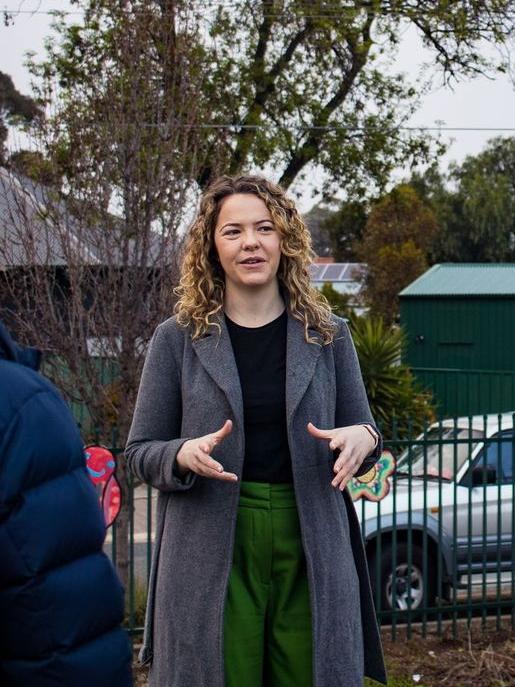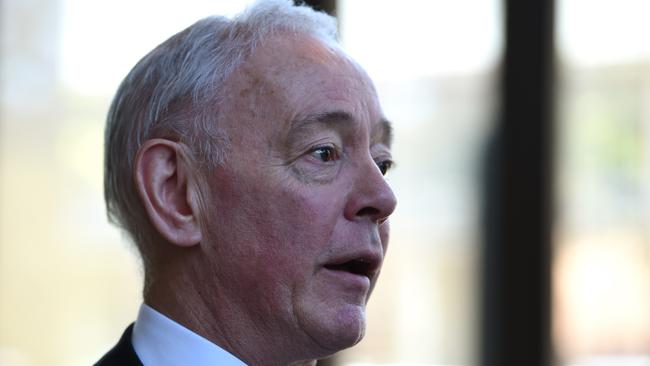SA election: The candidates in top spot for the donkey vote
It might not decide who forms government but this is one race where every state parliament hopeful and sitting MP still wants to be in front.
State Election
Don't miss out on the headlines from State Election. Followed categories will be added to My News.
The donkey vote looks likely to give a kickstart to sitting MPs in the state’s tightest marginal seats at this month’s election.
Lists of candidates as they’ll appear on ballot papers in each electorate show the random draw has put the Liberal incumbent above their Labor challenger in Adelaide, King and Newland, key seats being targeted by the opposition.
But in Elder, Labor candidate Nadia Clancy will sit higher than Liberal MP Carolyn Power.
The candidate lists published on Tuesday by the South Australian Electoral Commission show in Labor’s most marginal seat, the southern Fleurieu and Kangaroo Island district of Mawson, Liberal Amy Williams will appear ahead of incumbent Leon Bignell.
Overall, the major parties each have some seats where their candidate will get the benefit of the donkey vote where disaffected electors simply number boxes 1, 2, 3, 4 and so on from the top down.
Flinders University political researcher Rob Manwaring said there would only be a “relatively small” gain from securing a higher slot even though party insiders would be excited by the prospect.
The bigger trend was in voters being turned off by the parties, he said.
“Firstly there’ve been decreases in the use of the how-to-vote cards parties hand out to guide voters,” Associate Professor Manwaring said.

“People are going it alone.
“Then, more people are deliberately spoiling their paper or showing they don’t care who wins.”
In the 2018 SA poll, 44,497 lower house votes – 4.1 per cent of ballots – were informal because the numbering was incorrect or blank or the voter had made a mark or message without preferences. That was up from 3.1 per cent in 2014.
In the House of Assembly, every box must be numbered in sequence for a formal vote which counts.
In the Legislative Council, voters can either vote above the line or below the line. Above the line they must write a 1 and then as many or few numbers in sequence as they like. Below the line, they must number 12 or more boxes sequentially.
The commission listed 51 candidates for the 11 seats being contested in the Legislative Council.
In the lower house, Newland will have the biggest field, with nine candidates standing.
Six seats will only have three candidates.
Minor parties bet against the Liberals
By Kathryn Bermingham
Minor parties One Nation and the Australian Family Party will join the revived Family First in diverting preferences away from sitting MPs, including in key Liberal-held marginals in Adelaide’s northeast.
The three conservative parties have decided their preferences based on incumbents’ vote on a failed amendment to the abortion laws that passed the parliament last year. The amendment would have prevented the procedure after 23 weeks except in very limited circumstances.
In the state’s most marginal electorate of Newland, held by Liberal Richard Harvey on just 0.2 per cent, all three parties will run a candidate and direct preferences to Labor.
Two of the three are running in neighbouring King, held by Liberal Paula Luethen on 0.8 per cent, and will also preference Labor.
The Australian Family Party, the only of the three fielding a candidate in the electorate of Adelaide, will preference away from Liberal Rachel Sanderson who holds with a one per cent margin.
Labor will need to pick up those three seats in order to form majority government.
However, the conservative parties will preference away from Labor Mawson MP Leon Bignell, who holds his seat on a 0.7 per cent margin, and Badcoe MP Jayne Stinson, whose margin is 4.6 per cent.
Confirming their positions on Tuesday, One Nation’s state leader Jennifer Game and Australian Family Party leader, former senator Bob Day, said they had written to MPs prior to the vote to warn them of their intention.

Ms Game said the parties had talked about their aligned preference strategy, but there were other issues they disagree on.
Mr Day said his party was hoping to pick up as much as 10 per cent of the first-preference vote in the six key marginal seats where it will run candidates.
The reborn Family First party has been spearheaded by former Labor ministers Tom Kenyon and Jack Snelling, who have insisted there is no link between their current and former parties.
Asked about the preferencing strategy, Premier Steven Marshall said the connection was blatant.
“A vote for Family First in the northeast is a vote for Labor,” he said.
In Waite, the Greens will preference independent Sam Duluk above his replacement Liberal candidate Alexander Hyde.
Greens MLC Tammy Franks delivered a scathing speech to the upper house last year after Mr Duluk was acquitted of an assault charge but labelled a “drunken pest” over his behaviour at a Parliament House Christmas party.
But, she said, she was most critical of the Liberal Party’s poor handling of the incident and subsequent investigation.
The party will preference both candidates lower than independent Heather Holmes-Ross and Labor candidate Catherine Hutchesson, and will preference Labor above the Liberals in other lower house seats.
More Coverage
Read related topics:Peter Malinauskas





